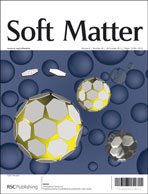A simple and novel method for avoiding the coffee ring structure has been demonstrated based on hydrophobic silicon pillar arrays during single-drop evaporation. When a drop of a colloidal suspension of latex spheres is dropped onto hydrophobic silicon pillar arrays with high contact angle hysteresis, the latex spheres are deposited at the periphery to form a porous gel foot due to the Wenzel wetting state of the drop on the substrate, which results in an effective elimination of the coffee ring structure. The coffee ring effect is avoided by relying on radially inward mass transport: a circulatory fluid flow triggered by means of the gel foot growth. Thus, uniform and ordered macroscale colloidal photonic crystals are fabricated. In the meantime, the influences of some factors, such as concentration of latex spheres, evaporation temperature, periodicity of hydrophobic silicon pillar arrays and the distance between the top rims of adjacent silicon pillars on drop deposition are investigated. This facile approach to eliminating the coffee ring structure will be of great significance for extensive applications of drop deposition in biochemical assays and material deposition.

You have access to this article
 Please wait while we load your content...
Something went wrong. Try again?
Please wait while we load your content...
Something went wrong. Try again?


 Please wait while we load your content...
Please wait while we load your content...